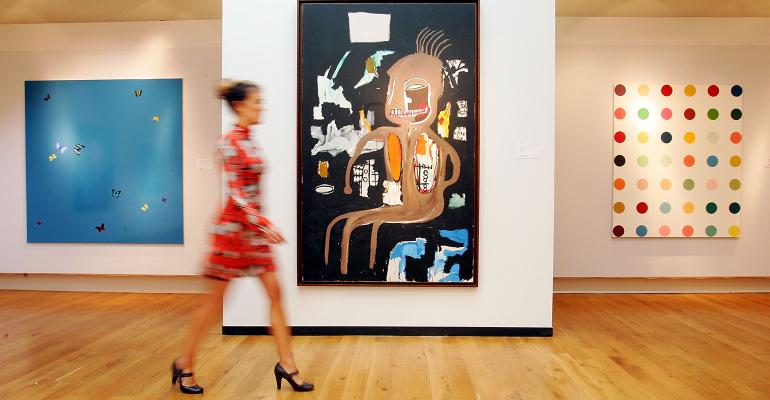The millennial demographic is finally starting to pay off student loans, buy houses and save money. They’re accumulating wealth and depending on advisors to help them invest, but in typical millennial fashion, their interest goes beyond the standard stocks, bonds and other investment instruments that advisors generally recommend. Fine art is a commodity that appeals to the demographic, so advisors need to be able to help explain how it can be a financial asset and wealth-building strategy—and not just something to decorate the walls of the homes they’re finally able to buy!
Art has never been more accessible. Social apps like Instagram allow millennials to interact and communicate with artists and galleries, providing access like never before. Millennials were also introduced to art from an early age through brand partnerships. Famously, sneaker companies have collaborated with artists to produce custom shoes and unique colorways inspired by the artist’s style. In 2019, renowned British artist Damien Hirst worked with Vans to apply his favorite motifs to some of their most popular styles, while Nike’s collaboration with Netherlands-born Piet Parra led to one of their most popular sneaker releases to date. Brand collaboration goes beyond sneakers, as the world-famous Jean-Michel Basquiat’s art-inspired makeup line is among the most popular for well-known brand Urban Decay. For advisors working with millennial clients, it’s important to realize that art was an entrenched part of their culture growing up, and not necessarily some highfalutin collectable for the rich and famous.
More than ever, art is permeating consumer goods and pop culture, which created a low barrier of entry for the millennial demographic to gain interest. Now that they’ve started to accumulate wealth, they’re seeking out advisors who can help them conduct due diligence and learn about investing in art. There are reasons for advisors to take this sector very seriously, as millennials often identify the following as selling points:
- Time—Generally, millennials are the youngest demographic to be able to accumulate the means to invest in art, which makes it an attractive asset class because they have the opportunity to let it appreciate over time. When advising, it's crucial for them to understand that art is a commodity whose value grows slowly, taking years or even decades. Because millennials are so young, they have the ability to see the complete cycle when it comes to an artist's rise in reputation over time. They don’t need to be investing in the Monets or Picassos of the world but, instead, can look for burgeoning artists that pique their interest and appeal to their taste. As their advisor, it’s important they realize that because of their youth, they’re uniquely positioned to let the artwork and artist appreciate over time.
- Unparalleled access—Beyond visually focused social media like Instagram, the internet has made the art world more accessible than ever. Aside from being able to connect directly with galleries and artists, online marketplaces have also seen a rise in popularity, providing the “Google everything” generation with means to purchase fine art in a familiar, comfortable way—using the mobile devices they love so much. The art industry has been slow to adopt the e-commerce revolution, but millennials are more likely to buy fine art online than any other demographic, and the industry is starting to appeal to their state of mind. The internet can be a modern-day Wild West, so if clients are considering purchasing art online, investors need to do their part and help them vet the opportunity. Are they buying directly from a gallery? What is the overall earning potential for the piece? The internet provides access to art from across the world, but it’s the investor's job to ensure that clients are purchasing art that will actually accrue value over time.
- Beyond just an investment—Unlike stocks and bonds, art also doubles as a hobby for millennials, and advisors can help young investors most in their research phase. Introduce them to the Sotheby's Mei Moses Indices and help them understand why it's the preeminent measure for the art market. Make sure they know how art is valued and what qualities drive value. While previous generations may have been more willing to allow advisors to handle their wealth as they see fit, millennials want to be involved. They want to be active and have a full understanding of how they’re diversifying their money, and the art world allows them to have a more hands-on approach. Whether it's communicating with an artist through an online art buying platform or arranging to see artwork in person through a gallery, investing in art allows millennials to be more involved with their investments.
More than with previous generations, art represents an investable asset class to millennials. Still scarred from the 2008 recession, they believe this physical asset will let them accrue wealth over time, while also giving them something nice to look at—and share on Instagram! The internet's ability to make almost everything feel accessible, combined with the art world introducing itself to millennials from an early age through brand partnerships and pop culture references, has made it an ideal market for the demographic. As this generation and the ones following it accrue wealth, advisors must know how to answer their questions and counsel them.
Mattis Curth is the CEO and co-founder of Artland





